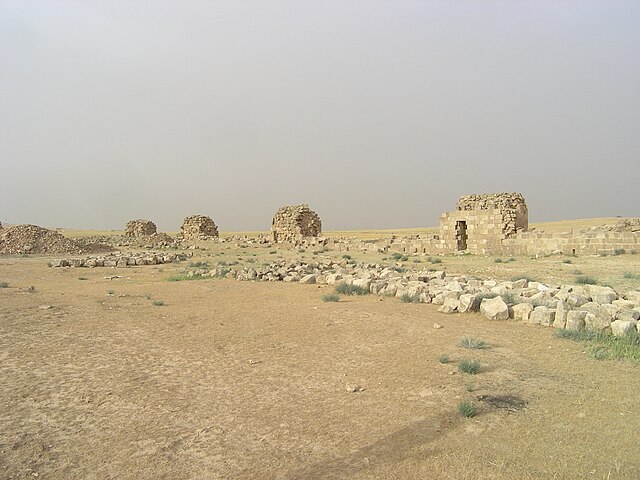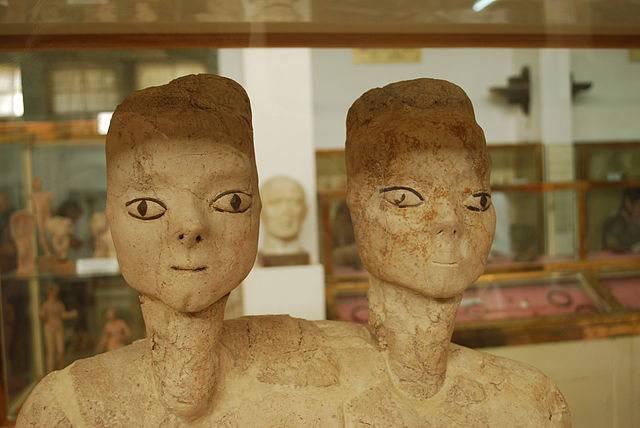Qasr Mushatta is the ruin of an Umayyad winter palace, probably commissioned by Caliph Al-Walid II during his brief reign (743-744). The ruins are located approximately 30 km south of Amman, Jordan, north of Queen Alia International Airport, and are part of a string of castles, palaces and caravanserais known collectively in Jordan and the wider Southern Levant region as the Desert Castles. Though much of the ruins can still be found in situ, the most striking feature of the palace, its facade, has been removed and is on display at the Pergamon Museum in Berlin. The complex was never completed.
The façade of Qasr Mushatta in the Pergamon Museum, Berlin
Remains of the facade at the original site
Behind the facade, 2008
Section of the outer wall, with towers
Jordan, officially the Hashemite Kingdom of Jordan, is a country in the Southern Levant region of West Asia. Jordan is bordered by Syria to the north, Iraq to the east, Saudi Arabia to the south, and the occupied Palestinian territory of the West Bank and Israel to the west. The Jordan River, flowing into the Dead Sea, is located along the country's western border. Jordan has a small coastline along the Red Sea in its southwest, separated by the Gulf of Aqaba from Egypt. Amman is Jordan's capital and largest city, as well as the most populous city in the Levant.
The 'Ain Ghazal Statues (c. 7250 BC) uncovered in Amman are some of the oldest human statues ever found.
The Mesha Stele (c. 840 BC) records the glory of Mesha, King of Moab, displayed at the Louvre Museum.
Petra, one of the New 7 Wonders of the World, contains Al-Khazneh, believed to be the mausoleum of the Nabataean King Aretas IV, 1st century AD
The Oval Forum of Jerash (c. 1st century AD), then member of the ten-city Greco-Roman league, the Decapolis, seven of which are present in modern-day Jordan.








